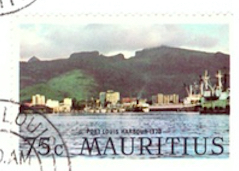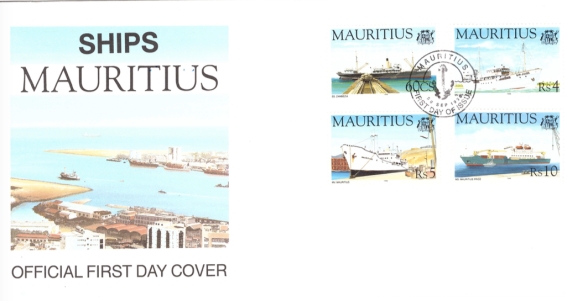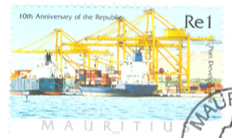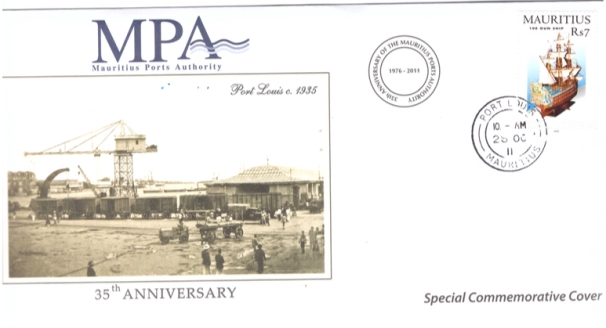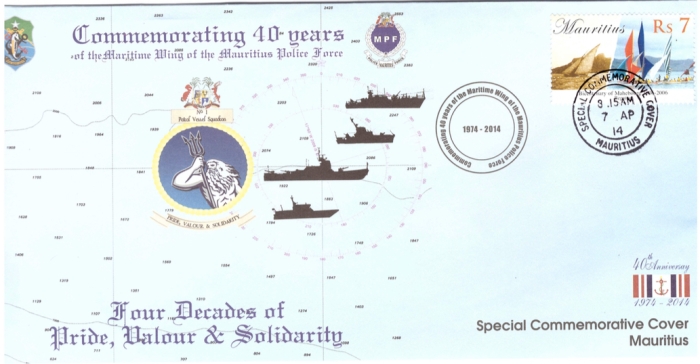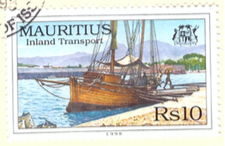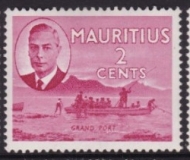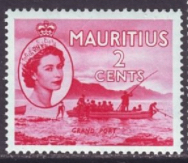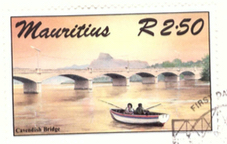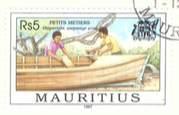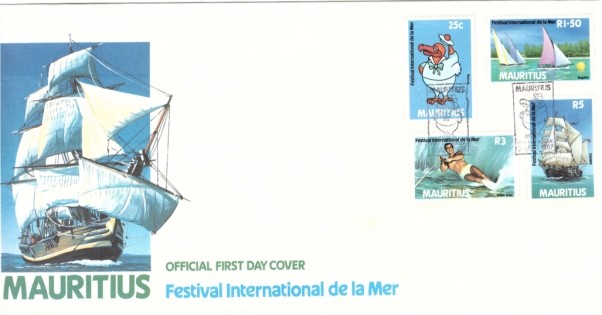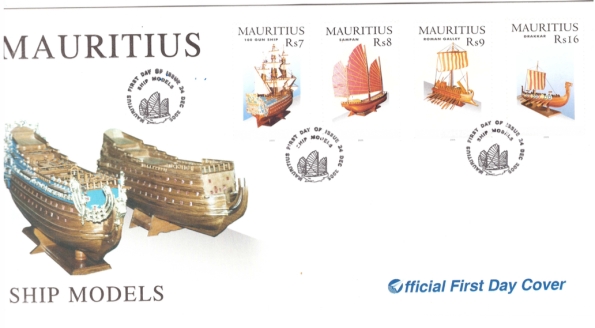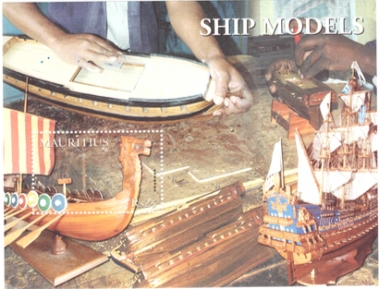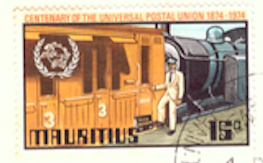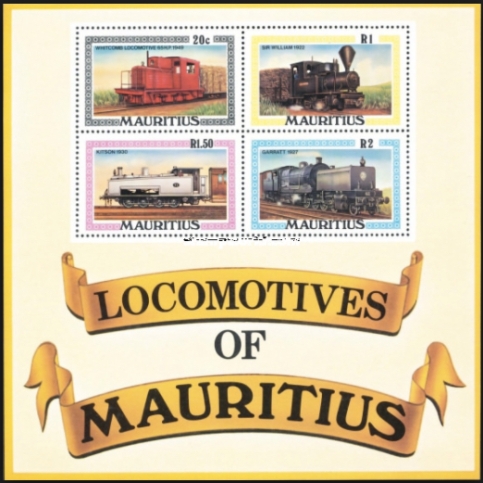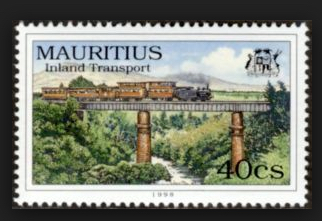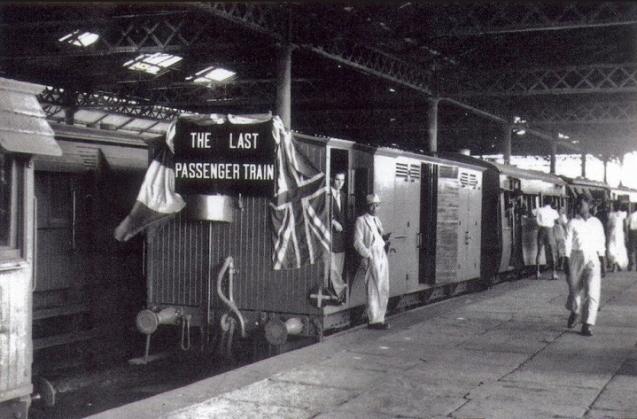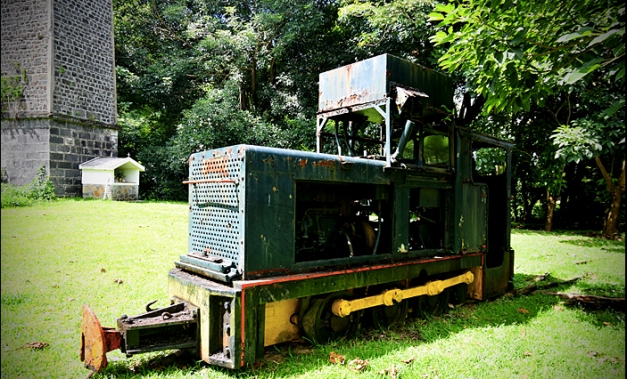This blog is a third in a series dedicated to modes of transport in Mauritius. This third blog post zooms into air transport, through our postal heritage.
Early days of air transport in Mauritius
The first plane to fly over Mauritius took off on 2 June 1922 from the now 18-hole golf course of Gymkhana. It was a World War I British biplane brought to Mauritius by ship and reassembled for that purpose. After a few demonstrations over the island, the plane was dismantled and brought back to England.
The first regional flight landed in Mon Choisy in the north of Mauritius on 10 September 1933 from Reunion Island. The two pioneering pilots were Maurice Samat and Paul Louis Lemerle. They flew on a Potez 43, named “Monique”. In November 1933, the plane was used to carry mails from Mauritius and Reunion and an airstrip in Mon Choisy continued to be used for the rare planes that came to Mauritius.
In 1970 a series of 4 postage stamps was issued to mark the 25th anniversary of Plaisance Civil Airport. The Rs. 2.50 stamp illustrated the Roland Garros Airplane, which landed in Mon Choisy in 1937.
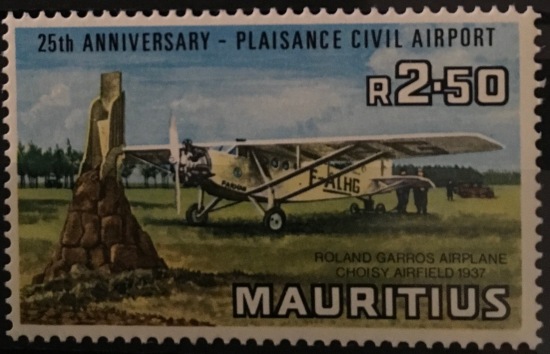
The first international flight from France landed in Mauritius in December 1936 on board a Farman 199 monoplane. The flight took 10 days, with stop-overs in Tunisia, Egypt, Djibouti and Madagascar.
During World War II (1939 – 45), Mauritius became a strategic location for the British in the Indian ocean.
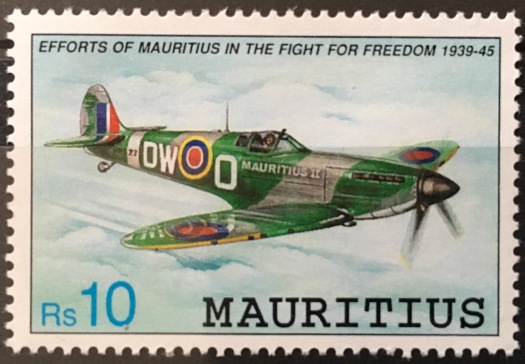
They operated Catalina hydroplanes for long reconnaissance missions in the region. Planes landed in the bay of Mahébourg or Baie du Tombeau for refuelling. In 1995, to commemorate the 50th Anniversary of World War II, a series of 3 postage stamps was issued. One of the 3 – Rs. 5 stamp illustrated a Catalina hydroplanes at Baie du Tombeau.
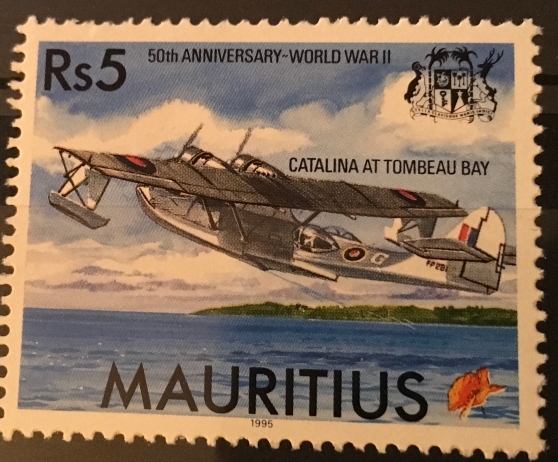
Construction of Plaisance Airport – a turning point
Mauritius however did not have an airport that could be used by the Royal Air Force. In that context, it was decided to construct an airport near Mahébourg. Construction began in 1942 and was completed in 1943. Since then the airstrip at Mon Choisy was abandoned. The first landing at Plaisance airport was made on 24th November 1943 by an RAF Dakota. 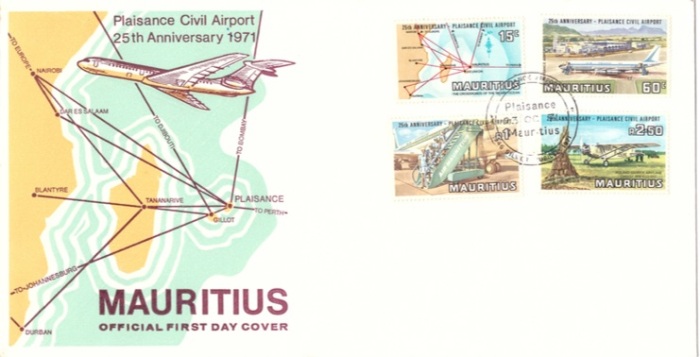
In 1971, to mark the silver jubilee of the construction of Plaisance civil airport, a set of 4 postage stamps was issues. The first day cover enveloppe illustrated Mauritius as a crossroad for the Indian Ocean, through the various stop-overs covered by flights that came to Mauritius at that time. It also showed a picture of the airport and Air France planes, which was the first international airplane to come to Mauritius. The Rs. 2.50 stamp illustrated the first airstrip in Mon Choisy in the North, prior to the opening of Plaisance airport and the Potez 43, which was used to link Mauritius to Reunion Island.
1945: First commercial flights
Until 1945, flights arriving in Mauritius were used to carry mails only. The first commercial flight was operated by the Réseau de Lignes Aériennes Françaises Libres, which later became Air France. It landed in Mauritius in 1945, covering the route Madagascar – Reunion – Mauritius. It also carried fifteen passengers and three crew members.
In 1970, Mauritius and France issued two aero philatelic covers to mark the 25th anniversary of the first Air France flight to Mauritius.
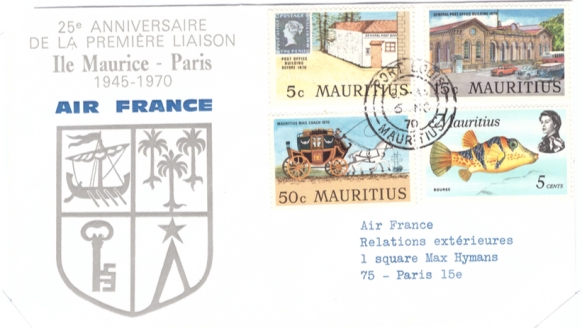
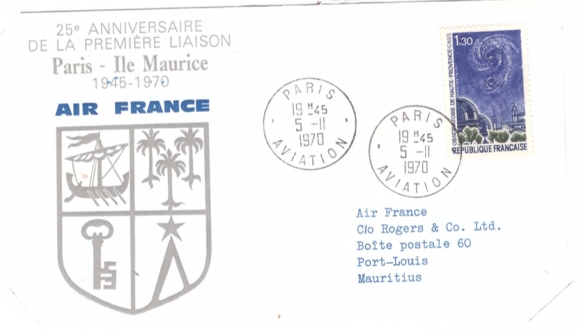
In 1995, another special aero philatelic cover was issued to mark the 50th anniversary of Air France’s presence in Mauritius.
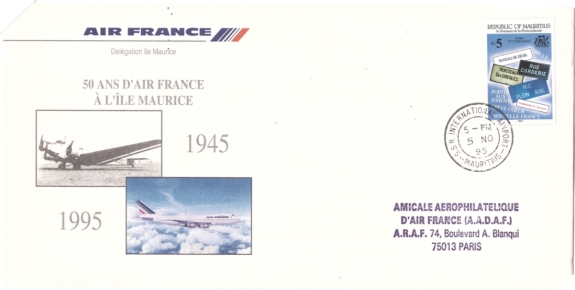
In 1947, Air France introduced a four-engine Douglas DC4 on the Paris – Plaisance route. The flight lasted two days, and had six stop-overs.
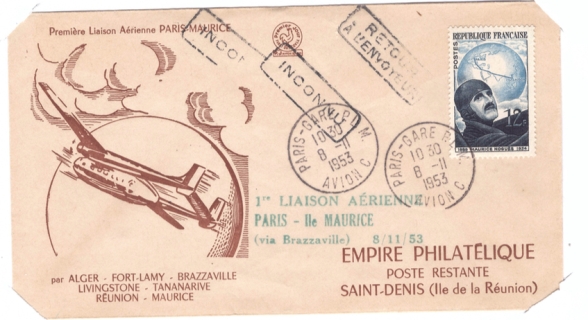
In November 1948, Qantas launched its first flight from Sydney to South Africa with stop-overs at Perth, Coco Islands and Mauritius. The aircraft used was a Lancastrian and the journey lasted forty-two hours. In 1952, Qantas started using Lockheed Constellation aircrafts on the same route. Special aero philatelic covers were released, with stamps from the port of departure, stop-over destination and port of arrival, to mark the event.
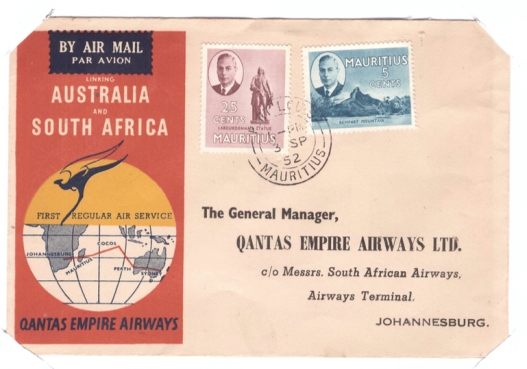
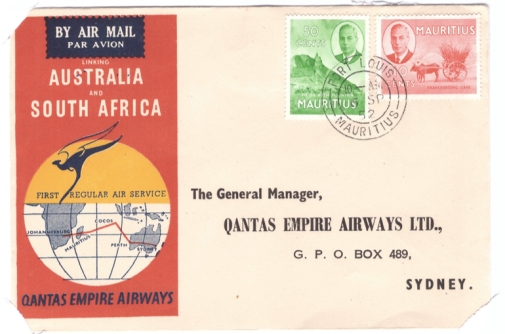
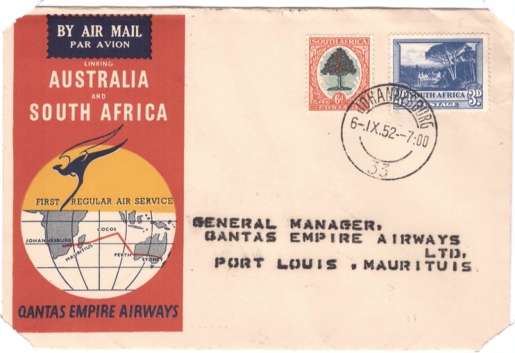
In January 1962, the British Overseas Airways Corporation (BOAC), which later became British Airways, started to service Mauritius. It operated a twenty-five-hour flight with stop-overs in Italy, Sudan, Kenya and Madagascar. In October 1962, BOAC used for the first time commercial jets, the De Havilland Comet 4, on the London-Plaisance route. The time for the journey was reduced to only seventeen hours. On that occasion, special covers were released, with stamps from each stop-over destination. Special aero philatelic covers were issued on the occasion of the flight flight between London and Mauritius.
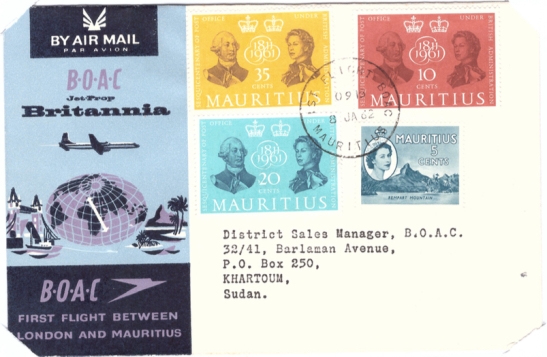
On 15th August 1967, Air India started a fortnightly flight from Bombay (now Mumbai) to Plaisance. Most probably they used Boeing 707 aircrafts. In that context, two special aero philatelic covers were released, with one envelope showing stamps of Mauritius, and the other picturing stamps from India.
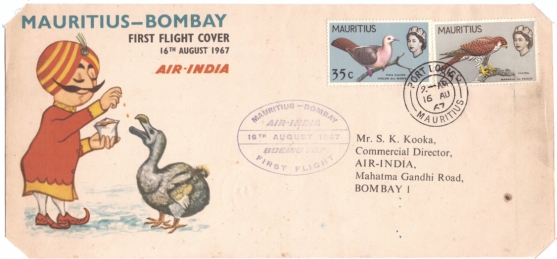
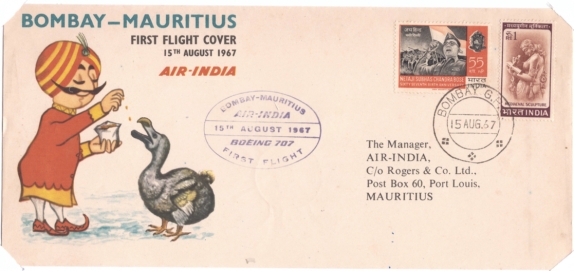
1967 – The birth of our national airline
The national airline Air Mauritius was set up on 14th June 1967. It was born out of the visionary leadership of Amédée Maingard de la Ville-ès-Offans, a Mauritian entrepreneur who was already a pioneer in the tourism sector. Just a few months before Mauritius became independent, he obtained the support of the then First Minister, Sir Seewoosagur Ramgoolam. It was decided to create a national airline company, with a consortium composed up of Air France, BOAC, Air India, Rogers and. co. and the Government of Mauritius. Mr Maingard became the first President and Director General of Air Mauritius.
Initially, the company operated only as a ground handling agent for other airlines already operating in Mauritius.
On 2 May 1970, another major international airline company, Lufthansa, inaugurated its flight to Mauritius. On that occasion, an official first day cover was released my the Government Post Office to mark the occasion.
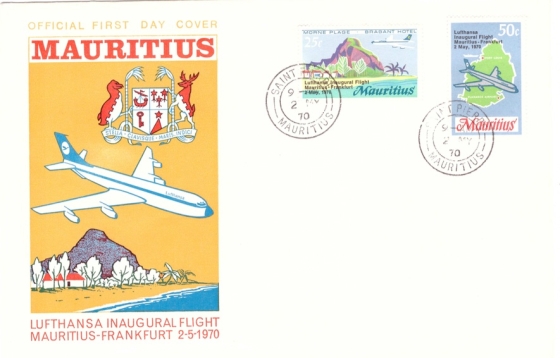
A number of aero philatelic envelopes and postal cards were also issued (these will soon be uploaded on a special page).
1972 – Air Mauritius launches its flight operations
It was only in 1972 that it flew its own aircraft, a Piper Navajo PA-31 leased from Air Madagascar. The commercial flights were limited to nearby Reunion island and Rodrigues island. On 13 September 1972, the first commercial flights linked Mauritius and Rodrigues.
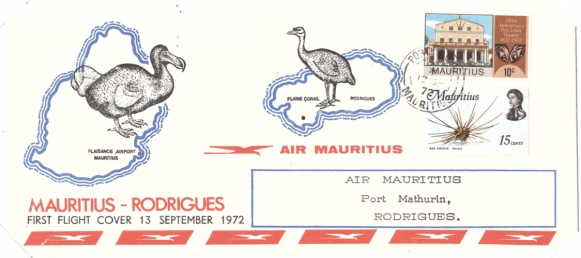
With the increase in traffic, the Piper Navajo was replaced with a 16-seater Twin Otter that was acquired in 1975.
To mark Air Mauritius international inaugural flights, an official first day cover and a miniature sheet were released on 31 October 1977. Four stamps included a 25 cs stamp, a 50 cs and a 75 cs stamp, all showing the twin otter planes. The Rs. 5 stamp represented a Boeing 707, which left for the first time for London on 31 October 1977. The emblem of Air Mauritius is the red-tailed tropical bird (Paille en queue), which is also featured on the 50cs stamp.
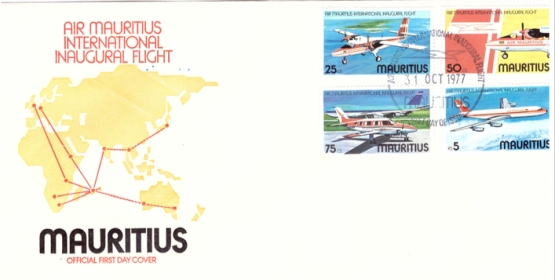
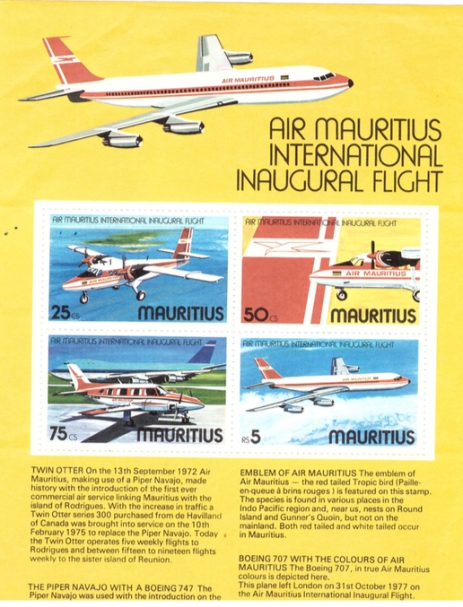
By mid-1980, the government of Mauritius had become the majority shareholder. It also extended its network coverage in in 1983, with the addition of Rome and Zurich, and Paris in 1984, operated by a Boeing 747, which was commemorated by a special cover in November 1984. This was a major milestone in bridging Mauritius’s insularity to the rest of the world.
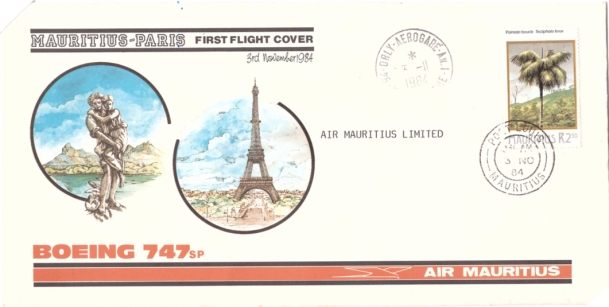
To mark the silver jubilee of Air Mauritius, a new official first day cover and a miniature sheet was released on 14 June 1993. It is composed of 4 stamps, (i) 40cs, representing a Bell 206B Jet Ranger helicopter, put in operations by Air Mauritius in 1985; (ii) Rs. 3, showing the taking off of a Boeing 747 SP, in operation since 1984. The aircraft was used for the first non-stop flights between Mauritius, Paris, Rome and Zurich; (iii) Rs. 4, showing an ATR 42, used for inter-island services, linking Mauritius to Reunion Isl. and Rodrigues. The plane was put in service in 1986; (iv) Rs. 10, showing a Boeing 767-200 ER, baptised the City of Port-Louis. This aircraft held the world record in 1988 for the longest non-stop distant. The FDC shows Air Mauritius route map.
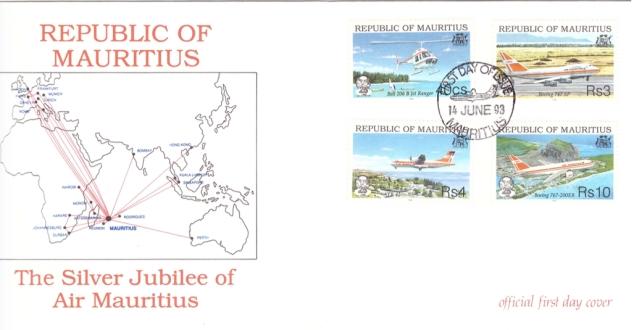
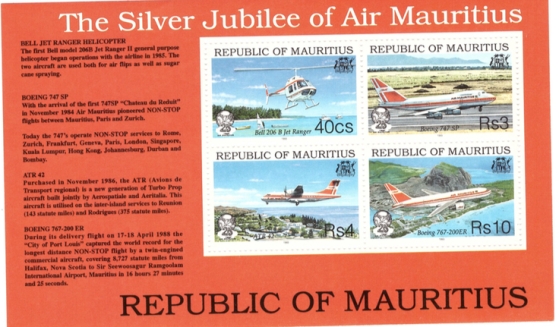
Over the years, the company acquired more airlines. Today, Air Mauritius covers a number of countries in Asia, Europe and Africa. It also has several weekly flights to Australia. Despite its small fleet compared to major global companies, it has strong connections with other companies, sharing code shares and partnerships with major companies, such as Lufthansa, Swiss Air and Emirates, to name but a few.
In 2017, Air Mauritius turns 50
On 14 July 2017, Air Mauritius celebrated its golden jubilee and issued a special commemorative cover to mark this occasion.
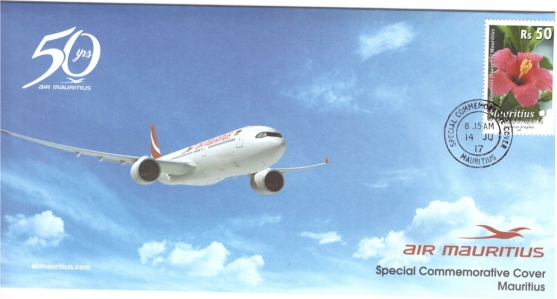
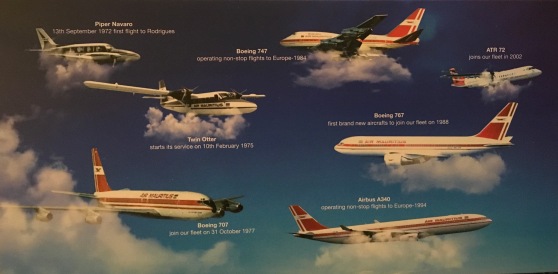
In 50 years, Air Mauritius made remarkable strides. It is a national pride and is one of the largest Mauritian firms. With its fleet of 13 planes, it covers a network of 25 direct destinations, over 4 continents. It continues to work with other airline companies to reach bring Mauritius to the world and bring the world to Mauritius.
You can visit the special page created on this blog on aero philately items relevant to Mauritius. This special page includes various first flights covers and special cards and covers featuring code shares with major companies operating in Mauritius. This is my personal collection: it is not complete and I’ll update it as my collection grows.
